

The history of the world in famous people’s lifespans since -2700BC.
With each time a link to the english wikipedia page.
Welcome to SampleRadar, the hub page for MusicRadar's regular giveaway of pro-quality, royalty-free samples. Here you can find links to all of our entries, which feature collections of loops, hits and multisamples in a wide range of genres. And the great news is that you won't have to pay a penny to download any of them.
The samples are supplied as WAV files so can be imported directly into your DAW of choice. Because they're royalty-free, you're welcome to use them in your music in any way you like - all we ask is that you don't re-distribute them.
A extensive book introducing C++ and Openframeworks
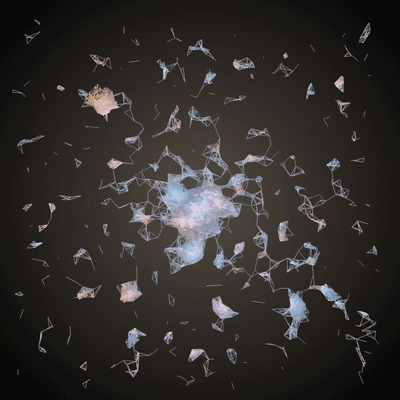
Histomap: a visualization of 4000 years of History, created in 1931 by John B. Sparks.
An oscilloscope can be made to display shapes by playing sounds into it. Making music from these sounds while simultaneously drawing images with those sounds takes things to another level.
In the video I fix up and put an old oscilloscope to a new use, and show how you can watch these audio-visual demos even if you don't have a oscilloscope by using a computer.
If you want to skip the preamble and repair section and jump straight to the demo - it starts at 05:00
Useful Links
Jerobeam Fenderson’s Oscilloscope Music
http://oscilloscopemusic.com
Jerobeam Fenderson’s Youtube Page
https://www.youtube.com/user/jerobeam...
If you have any technical queries - the FAQs here should answer them
http://www.jerobeamfenderson.net/post...
Oscilloscope Emulator for Windows, Mac & Linux
https://asdfg.me/osci/
Reddit Oscilloscope Music Page
https://www.reddit.com/r/oscilloscope...
Here’s a link to a Free Oscilloscope Demo called Youscope
http://makezine.com/2007/08/29/yousco...
If you like seeing oscilloscopes put to unconventional uses - perhaps you'll be interested to see Quake played on one. https://youtu.be/GIdiHh6mW58
You may also be interested to know that the 'first video game' "Tennis for Two" was played on a scope display in 1958
https://en.wikipedia.org/wiki/Tennis_...
If you have an old X/Y capable oscilloscope you'll probably need a pair of BNC male to RCA female converters like these http://amzn.to/2f67Qsk if you want to connect audio devices to it.
The X27 is the highest performing true gen 4 color night vision low light sensor imaging system. The low noise real time 60hz HD detector is the first of its kind breakthrough technology that offers day like imagery in the darkest of environments. The X27 color low light camera images from 390 to 1.2 Um and sees IR military spot lasers. The Sensitivity outperforms the latest image intensified tube night vision technology and does so in full color.
My good friend Tony Duggan-Smith built this musical (?) instrument for me, with the intention of using it in horror film score.
It consists of metal rulers which are bowed, a hurdy gurdy like mechanism, a string played with an attached Ebow, a spring reverb (also played with an ebow) some long metal rods, magnets, trash, anything at all to get unnerving sounds.
It took 200,000 years for our human population to reach 1 billion—and only 200 years to reach 7 billion. But growth has begun slowing, as women have fewer babies on average. When will our global population peak? And how can we minimize our impact on Earth’s resources, even as we approach 11 billion?
A credit card sized board, mounted in a wooden box. Musical instrument for your active relaxation, plus open platform for experiments with sound and music making.
https://www.kickstarter.com/projects/967276512/gecho-loopsynth-a-modern-equivalent-of-the-music-b

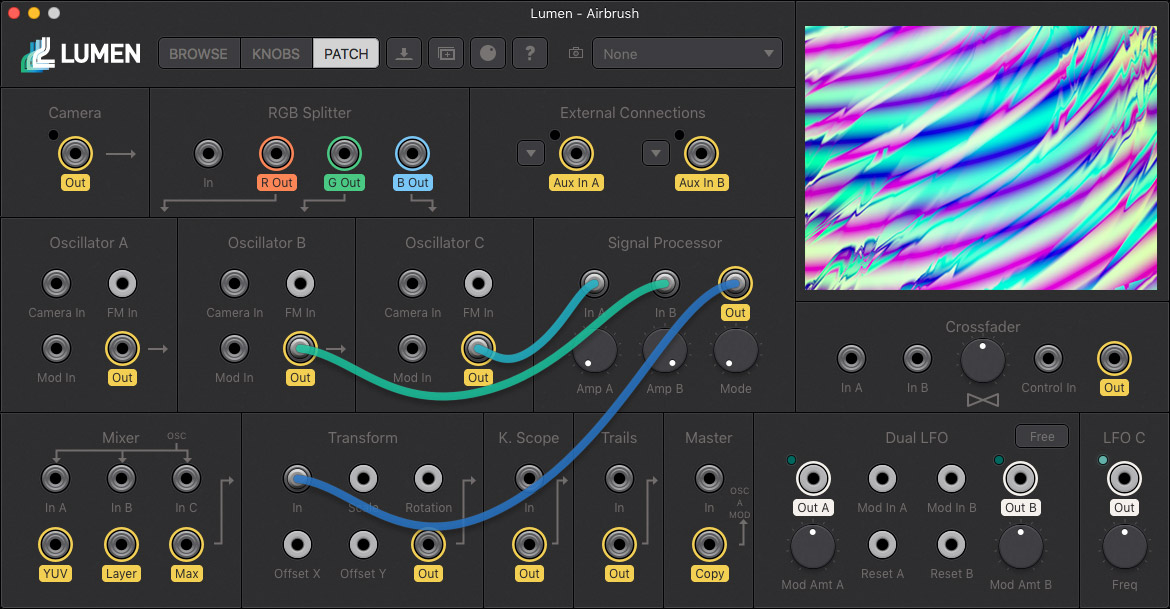
Lumen is a Mac App that makes it easy for you to create engaging visuals in real time. Use the same process with Lumen as you would with a hardware video synth, but with modern features only software can provide. With a semi-modular design that is both playable and deep, Lumen is the perfect way to get into video synthesis.
A strange loop is a hierarchy of levels, each of which is linked to at least one other by some type of relationship. A strange loop hierarchy is "tangled" (Hofstadter refers to this as a "heterarchy"), in that there is no well defined highest or lowest level; moving through the levels, one eventually returns to the starting point, i.e., the original level. Examples of strange loops that Hofstadter offers include: many of the works of M. C. Escher, the information flow network between DNA and enzymes through protein synthesis and DNA replication, and self-referential Gödelian statements in formal systems.
In I Am a Strange Loop, Hofstadter defines strange loops as follows:
And yet when I say "strange loop", I have something else in mind — a less concrete, more elusive notion. What I mean by "strange loop" is — here goes a first stab, anyway — not a physical circuit but an abstract loop in which, in the series of stages that constitute the cycling-around, there is a shift from one level of abstraction (or structure) to another, which feels like an upwards movement in a hierarchy, and yet somehow the successive "upward" shifts turn out to give rise to a closed cycle. That is, despite one's sense of departing ever further from one's origin, one winds up, to one's shock, exactly where one had started out. In short, a strange loop is a paradoxical level-crossing feedback loop. (pp. 101-102)

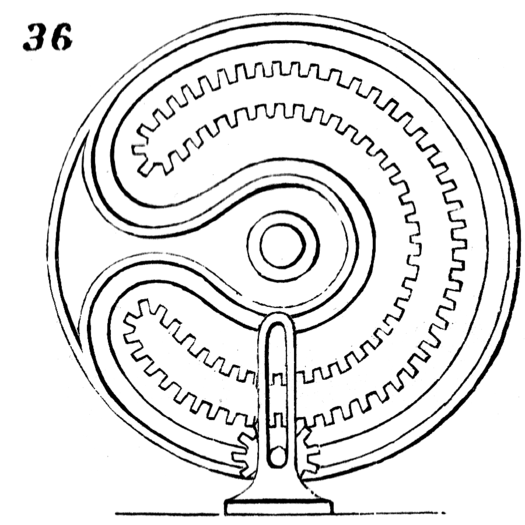
This is an online edition of the classic technical reference Five Hundred and Seven Mechanical Movements by Henry T. Brown.
This site contains the original illustrations and text from the 21st edition of the book, published in 1908. It also includes animated versions of the illustrations, and occasional notes by the webmaster.
The animated versions are not yet complete. They are identified by color images in the thumbnail pages.
A Chrome experiment webapp that glitches photos


A free and open-source intermedia sequencer
Enables precise and flexible scripting of interactive scenarios. Control and score any OSC-compliant software or hardware : Max/MSP, PureData, OpenFrameworks, Processing...
An open source collection of 20+ computational design tools for Clojure & Clojurescript by Karsten Schmidt.
In active development since 2012, and totalling almost 39,000 lines of code, the libraries address concepts related to many displines, from animation, generative design, data analysis / validation / visualization with SVG and WebGL, interactive installations, 2d / 3d geometry, digital fabrication, voxel modeling, rendering, linked data graphs & querying, encryption, OpenCL computing etc.
Many of the thi.ng projects (especially the larger ones) are written in a literate programming style and include extensive documentation, diagrams and tests, directly in the source code on GitHub. Each library can be used individually. All projects are licensed under the Apache Software License 2.0.

MyBrother.tv is an artwork & use the api of: YouTube & wikipedia
The intend of mybrother tv is to provide a usergenerated content channel out from youtube and wikipedia. it s use a word to trigger the language and the flow of the clips. The Engines are composed with 4 differend intends.
EngineEntertinment: Compose a floating stream-channel arround the word.
EngineWikText: fullfast clipproducer from the word
Engine Multikulti: mix the language to get culturspread about the word
EngineAssoN: using hebs-roule on the word
+: entropic
-: epistemologichot tip: use a Commercial-blocker
actions
link to actual video on youtube.com
fullscreen
show the clip within a playlist
restart mybrother.tv
Paperholm began in August 2014 as a daily project by artist Charles Young. One new object is designed, made, photographed and uploaded each day. All of the models are made using 200gsm watercolour paper and PVA glue. This method allows for rapid construction and exploration of diverse areas of architecture, pushing the possibilities of this single material.
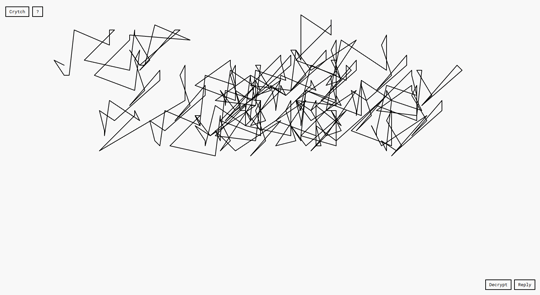
Crytch is a web tool for creating and encrypting visual messages.
It transfers the idea of Visual Cryptography to letters and shapes consisting of multiple anchor points and connecting lines. As soon as one begins to enter a password, these points start moving on a variable matrix. That way, the password will never be stored on the server.
The correctly decrypted image is the only possible verification of a valid password. Thus, the exact point at which the original image is revealed can solely be determined by a human observer.
All text messages are displayed in a typeface specifically designed for Crytch. In order to make it impossible to deduce the encrypted letter just by counting its anchor points, all glyphs consist of the exact same amount.
Out now for iOS [http://4dtoys.com/ios] and Steam (Vive VR or Mouse+Keyboard) [http://4dtoys.com/steam]
Showing 4D Toys and an explanation of how 4D objects would look like and bounce around from the perspective of a 3D being.

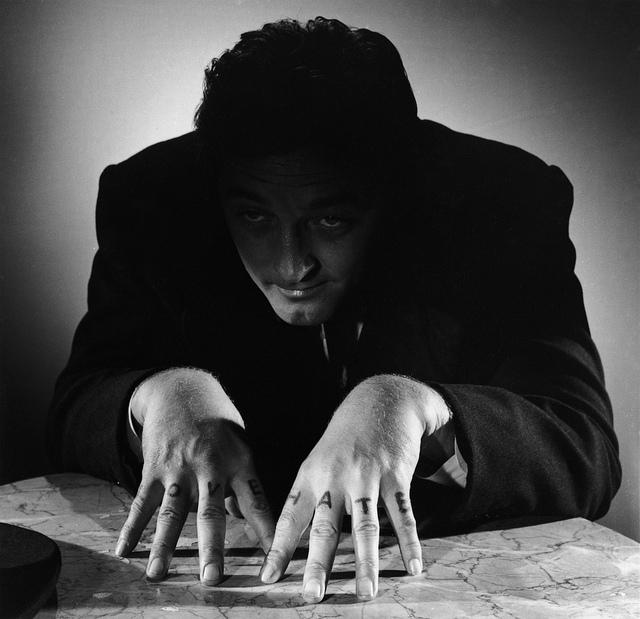
Did you ever see a film that when it ends you realise you’ve not moved in your seat? I have. The Night of The Hunter is one such film. Charles Laughton’s only directorial outing stars the spellbinding Robert Mitchum as the epitome of brooding menace and undiluted evil. He is one of the greatest movie villains, killing widows for cash and satisfaction in the name of the Lord. Laughton called his film “a nightmarish sort of Mother Goose tale”. It’s better than that.
James Agee wrote the script to this haunting adaptation of Davis Grubb’s 1953 gothic novel.
Mitchum plays Reverend Harry Powell, a terrifying self-styled preacher on a mission to get at some stolen loot left by a family man hanged for his crimes. Creeping horror looms in the shadows. Stanley Cortez’s camerawork frames an otherworldly West Virginia. Unforgettable images linger: Love and Hate tattooed on Mitchum’s fingers; Mitchum riding a horse, their silhouette the only relief on a dark horizon; that submerged car carrying the dead robber’s wife Shelley Winters and Mitchum latest victim to the underworld; the children fleeing down the Ohio River, their plight seen through a spider’s web; the children’s saviour Lilian Gish sat on her stoop, gun on her lap and as she and Mitchum duet a hymn.
https://github.com/sirxemic/fractal-paint
Online little tool to create fractal-ish images from simple drawings using HTML5 canvases.
Daniel Crooks’ Phantom Ride alludes to cinema history to create a seamless journey through a composite reality. By manipulating digital footage as though it were a physical material, the artist has constructed a collaged landscape that takes us through multiple worlds and shifts our perception of space and time.

Pourquoi sourit-on sur les portraits photographiques au XXe siècle, et pas au XIXe siècle? Sous cette forme élémentaire, la question est devenue une énigme prisée des études visuelles. Héritière d’une longue tradition d’analyse de l’expression des émotions, elle apparaît comme une évolution historique directement observable, documentée par des sources abondantes. Découvrir la clé de cette métamorphose paraît à portée de main.

Unequal Scenes portrays scenes of inequality in South Africa from the air.
Discrepancies in how people live are sometimes hard to see from the ground. The beauty of being able to fly is to see things from a new perspective - to see things as they really are. Looking straight down from a height of several hundred meters, incredible scenes of inequality emerge. Some communities have been expressly designed with separation in mind, and some have grown more or less organically.
During apartheid, segregation of urban spaces was instituted as policy. Roads, rivers, “buffer zones” of empty land, and other barriers were constructed and modified to keep people separate. 22 years after the end of apartheid, many of these barriers, and the inequalities they have engendered, still exist. Oftentimes, communities of extreme wealth and privilege will exist just meters from squalid conditions and shack dwellings.
My desire with this project is to portray the most Unequal Scenes in South Africa as objectively as possible. By providing a new perspective on an old problem, I hope to provoke a dialogue which can begin to address the issues of inequality and disenfranchisement in a constructive and peaceful way.
Outpost of the 'Art of Akira' exhibit, featuring original production art used in the creation of Katsuhiro Otomo's 'Akira' (1988).

The employees at Factum Arte are world-class art forgers. But this Madrid-based company is no criminal enterprise. Each piece they create is intended to preserve and protect our cultural heritage. The company has even developed advanced technologies to scan, document and recreate a vast array of objects. From priceless Renaissance paintings to a life-size replica of Tutankhamun’s tomb, founder Adam Lowe says that creating these facsimiles is one of the best ways to protect the originals.

This is my tribute to Pablo Picasso’s most famous artwork, Guernica (1937). The main reason to do this is to echo Picasso’s antiwar message, which I strongly believe is needed more than ever. The backside of this artwork I added a few other Picasso’s artworks to advocate peace, however washed out and fragmented it is. The ox, the “sleeping” soldier, and Pegasus are from one of his early Guernica sketches. The others, most notably his Bouquet of Peace (1958), are sampled from his later works with peace theme. The only 3 animated elements are the flower, the lamp, and the light bulb. To me the flower symbolizes life, the lamp represents hope, and the light bulb embodies technological destruction. As long as life continues and hope lasts, humanity will goes on.
Open Stage Control is a libre desktop OSC bi-directionnal control surface application. It's built with HTML, JavaScript & CSS on top of Electron framework
Download here : https://github.com/jean-emmanuel/open-stage-control/releases
In July 2016, MoMA PS1 invited artist Katharina Grosse to transform a decaying former military building at Fort Tilden, Queens, into a monumental, sublime artwork using a specialized technique to spray brightly colored paint directly onto the structure. Grosse’s approach highlights the potential of painting as a medium, and encapsulates the stark beauty of this manmade structure and its natural surroundings.
PabloDraw is an Ansi/Ascii text and RIPscrip vector graphic art editor/viewer with multi-user capabilities.

An Archive of 10,000 Cylinder Recordings Readied for the Spotify Era. The UCSB Library invites you to discover and listen to its online archive of cylinder recordings.

Collaging like Painting with clouds...
Satellite Collections
digital prints
2009-2011
You can see from pole to pole and across oceans and continents and you can watch it turn and there's no strings holding it up, and it's moving in a blackness that is almost beyond conception.
-Eugene Cernan, an astronaut on the Apollo 17, on seeing the Earth from space
In all of these prints, I collect things that I've cut out from Google Satellite View-- parking lots, silos, landfills, waste ponds. The view from a satellite is not a human one, nor is it one we were ever really meant to see. But it is precisely from this inhuman point of view that we are able to read our own humanity, in all of its tiny, repetitive marks upon the face of the earth. From this view, the lines that make up basketball courts and the scattered blue rectangles of swimming pools become like hieroglyphs that say: people were here.
The alienation provided by the satellite perspective reveals the things we take for granted to be strange, even absurd. Banal structures and locations can appear fantastical and newly intricate. Directing curiosity toward our own inimitably human landscape, we may find that those things that are most recognizably human (a tangle of carefully engineered water slides, for example) are also the most bizarre, the most unlikely, the most fragile.


Hiroyuki Hamada (b. 1968, Tokyo) has exhibited throughout the United States and in Europe and is represented by Lori Bookstein Fine Art. He has been awarded various residencies including those at the Provincetown Fine Arts Work Center, the Edward F. Albee Foundation/William Flanagan Memorial Creative Person’s Center, the Skowhegan School of Painting and Sculpture, and the MacDowell Colony. Hamada’s work has been featured in various publications, including Stokstad and Cothren’s widely used art history text book Art: A Brief History (Pearseon). In 1998 he was the recipient of a Pollock-Krasner Foundation grant, and in 2009 he was awarded a New York Foundation for the Arts Fellowship. Hamada lives and works in East Hampton, New York.

Artificial Neural Networks have spurred remarkable recent progress in image classification and speech recognition. But even though these are very useful tools based on well-known mathematical methods, we actually understand surprisingly little of why certain models work and others don’t. So let’s take a look at some simple techniques for peeking inside these networks.
We train an artificial neural network by showing it millions of training examples and gradually adjusting the network parameters until it gives the classifications we want. The network typically consists of 10-30 stacked layers of artificial neurons. Each image is fed into the input layer, which then talks to the next layer, until eventually the “output” layer is reached. The network’s “answer” comes from this final output layer.
One of the challenges of neural networks is understanding what exactly goes on at each layer. We know that after training, each layer progressively extracts higher and higher-level features of the image, until the final layer essentially makes a decision on what the image shows. For example, the first layer maybe looks for edges or corners. Intermediate layers interpret the basic features to look for overall shapes or components, like a door or a leaf. The final few layers assemble those into complete interpretations—these neurons activate in response to very complex things such as entire buildings or trees.
One way to visualize what goes on is to turn the network upside down and ask it to enhance an input image in such a way as to elicit a particular interpretation. Say you want to know what sort of image would result in “Banana.” Start with an image full of random noise, then gradually tweak the image towards what the neural net considers a banana (see related work in [1], [2], [3], [4]). By itself, that doesn’t work very well, but it does if we impose a prior constraint that the image should have similar statistics to natural images, such as neighboring pixels needing to be correlated. 